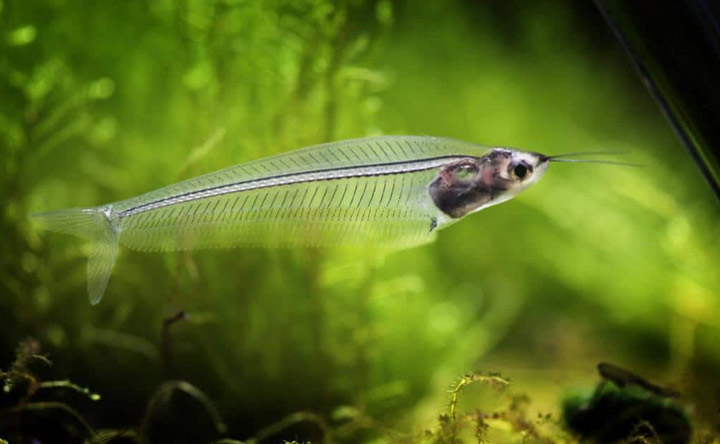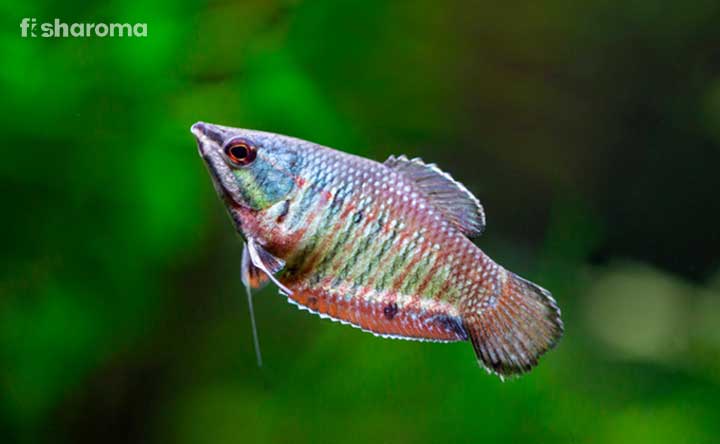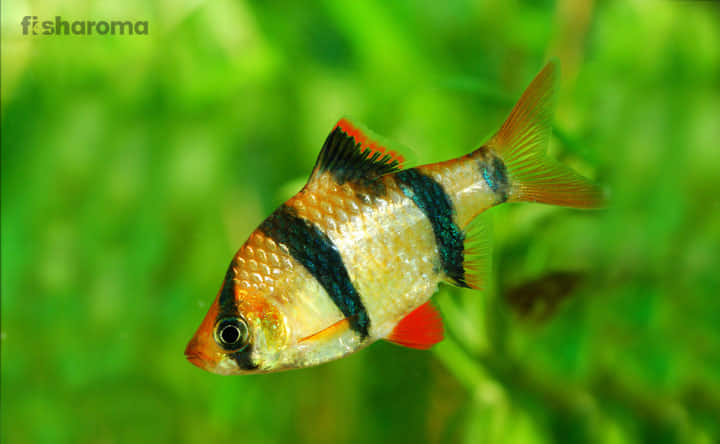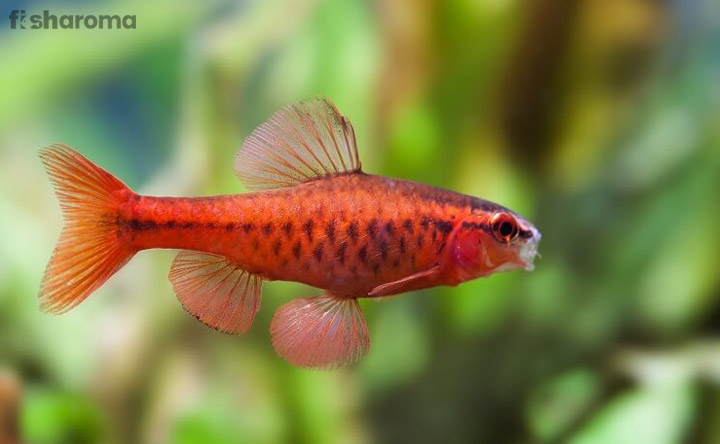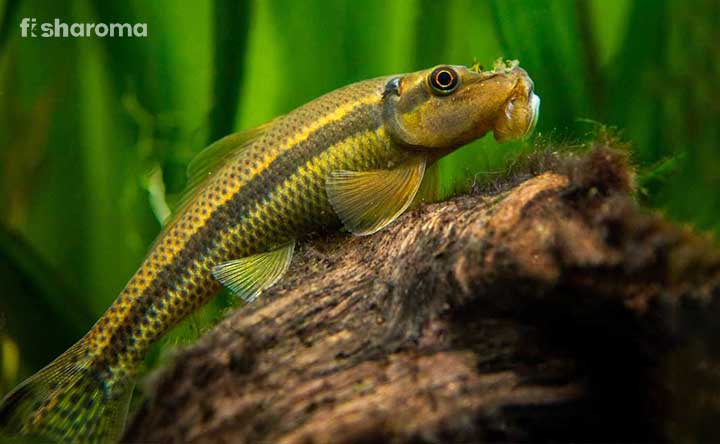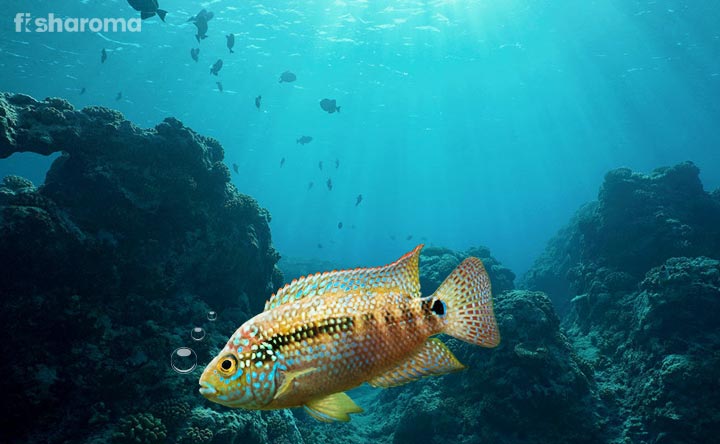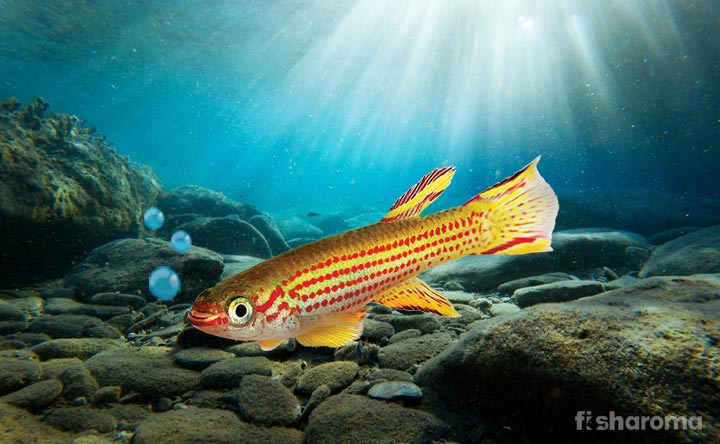An Extensive Care Guide for Phoenix Rasbora

- Origin and Habitat of Phoenix Rasbora
- Appearance of Phoenix Rasbora
- Behaviour of Phoenix Rasbora
- Lifespan of Phoenix Rasbora
- Diet of Phoenix Rasbora
- Tank Requirements for Phoenix Rasbora
- Water Type of Phoenix Rasbora
- Compatibility of Phoenix Rasbora
- Breeding of Phoenix Rasbora
- Diseases and Treatments of Phoenix Rasbora
- Summary
Phoenix Rasboras, as stunning as their name is, are tiny yet spectacular fish species. Their maintenance is not difficult, neither is their temperament. In the aquatic fish trading field, the nano or micro fish, known for its beauty, holds a special position. However, they are commonly mistaken for their cousin Chili Rasboras. So much so, that some fish connoisseurs think these two are just colour variations of the same species, that too, because of topographical reasons. But, scientifically, they are different and in this article, we will show you how easy dealing with this particular Phoenix Rasbora is.
Get ready for an educative guideline ahead, especially, if the name has already excited you. Let’s start with a proper introduction to the fish.
Key Specifications of Phoenix Rasbora
The following chart is a shortcut key for you to understand the fish type. Take a glance and figure out if this is going to be in your aquarium. Though, we recommend you to read the entire article for comprehensive knowledge.
| Scientific Name | Boraras merah |
| Origin | Southern Region of Borneo |
| Lifespan | Maximum 7 years |
| Colours | Silver, red, and orange body with black markings. |
| Temperament | Docile |
| Size | 0.5-0.8 inch |
| Diet | Usually carnivore, but can be omnivorous when domesticated |
| Family | Cyprinidae |
| Compatibility | Mostly social |
| Reproduction | Egg-scatterer |
| Maintenance Requirements | Moderately easy |
| Tank Size | Around 5 gallons |
Overview
The tiny species is a powerhouse of energy, enchanting everyone with their appearance and cute activities. Belonging to the Cyprinidae family, they are closely related to other small yet social fishes, with pretty much similar skill and disposition. Despite their size, they sport a predatory nature in the wild and only consume live foods. But the amazing thing is that these fishes can adjust to an omnivorous diet as long as it satisfies their hunger.
Their deceptive look doesn’t let you guess its actual power, but it is quite an energetic one, to say the least. Their nature is perfect for in-house breeding. As long as these Rasboras are receiving all suitable conditions from the your end, they will happily entertain you along with their tank mates.
Origin and Habitat of Phoenix Rasbora
These fishes are found in Southeastern Asia, specifically in the Borneo province of Kalimantan Tengah of Indonesia.
The geographical conditioning of the place is such that the water, in which the fishes are found, is typically a slow-moving blackwater river. There is a lot of vegetation around their natural habitat, so they are accustomed to swimming through deep plantations. Also, the heavy greeneries or canopies do not let the sunlight directly pass through them, so the water is somewhat in the darker zone.
Due to many organic matters and chemicals released into the water, the colour of the water remains dark and opaque. These are mostly tannins, that is, in turn, a result of the decomposition of leaves and other things found near the waterbody.
Appearance of Phoenix Rasbora
The small fish has a typical Rasbora-like shape, exuding a riot of colours. Males and females showcase dimorphism, especially once they are fully mature. The characteristically black line that is present in almost all Rasboras fishes, is missing in this species.
Size
One of the smallest of the family, Phoenix Rasbora’s standard size is 0.5-0.8 inches. Females are usually rounder than males during the breeding season because they are full of eggs.
Colour
Phoenix Rasboras have a pale greyish body with black markings and each of the markings is surrounded by red and orange hues. The iconic black spot on the middle part of the body is usually darker than they are in other Rasbora species. The reddish hue, which is a signature shade for this species, is further stretched towards the head. The grey shade gradually transformed into a transparent one, especially near the fins, which are also reddish on the edges. During the breeding or spawning time, female Rasboras showcase a darker red shade.
Behaviour of Phoenix Rasbora
A happy-go-lucky species by nature, the schooling fish loves to stay in groups. It is good for their mental and physical well-being as it gives them a sense of security. They are much happier, jovial, and always in their full spirit when they roam together. Aggression has never been an issue with these Rasboras, and they are never scared around their own kind. On one hand, they are apparently docile, but on the other hand, they are fierce when it comes to chasing their prey. They are an active predator in the wild and never shy away from procuring live foods.
Lifespan of Phoenix Rasbora
Their average lifespan is a maximum of 7 years, and that too is under proper guidance.
Diet of Phoenix Rasbora
The carnivorous fish will feast on anything that they hunt themselves, but that is for their natural habitat. They usually prefer small crustaceans, (read smaller, as the fish is small itself !) worms, and insects. Even zooplanktons work for them too, but in domestic habitat, you can try feeding them both live and frozen fleshy foods as treats. However, they don’t throw any tantrums if they are given pelleted or flake foods either.
In terms of frozen foods, thaw them beforehand so that the fish finds it easy to chew on. Remember, they don’t get frozen items in the wild, so this thawing process is unskippable. Also, the food particles need to be smooth and finely sliced, so that it gets a powdery texture, fit for the tiny chewers.
Feed them twice and not more than that at all. They eat either from the top or from the middle of the aquarium. So, make sure you drop food accordingly, just to avoid food piling up at the base of the tank.
Include the following items that will ensure their dietary needs,
- Mosquito Larvae
- Bloodworms
- Daphnia
- Microworms
- Brine Shrimps
- Any small invertebrates
Tank Requirements for Phoenix Rasbora
The small fish might make you feel that it needs nano aquariums or tanks, but don’t let it slip out of your mind that you are not going to house a single fish. Keep at least 6 Phoenix Rasboras together and not less than that. More, the merrier, but set up the tank accordingly in terms of the size and its ornamentation. Ideal setting always prompts to keep a school of 8-10 fishes.
Tank Size
A standard tank with the capability of holding 5 gallons of water is suitable for around 5-6 fishes. If you want to accommodate more fishes, then keep on adding a gallon of water for each couple of fishes. The fishes mostly stay either on the top or in the middle of the tank, and rarely at the base, that too, for foraging only. So, the tank needs to be spacious and watery both horizontally and vertically, giving liberty to the fish to swim through.
Tank Lid
Use a standard lid that goes well with the aquarium size and need.
Substrate
The surface of the tank should be sandy, full of smooth gravels, so the fish can easily practice their natural scavenging proclivity, without causing any injuries to themselves. Additional leaf litters will also do because in their natural setting they are used to thrive in a lot of leafy and green swampy surfaces.
Filter
Filtration is not mandatory, still, for maintaining the flow or speed of the tank water, install a Sponge filter (Air-Powered). It will keep the water flowing slow, just like their natural surroundings.
Ornaments
Apart from other tank essentials, like filters and water, there are no mandatory ornamentations. But you can always include some small hiding spots where the fishes can enjoy a little privacy from other species (if housed together) or unwind themselves if required. Do not use anything synthetic or plastic extensively as they can cause infections, instead use natural things like coconut shells with attached plants.
Lighting
A dim-lighted environment is natural for the fish species, so bright lights are a strict no-no. Remember, they belong to dense forests, where they don’t get much sunlight at all. While aquarium lights are important for the owner, to find and spot the fish, Phoenix Rasboras can do well with minimum and smooth low lighting around them.
Presence of Flora
“Plenty” is the word for incorporating plants, twigs, and foliages inside the tank. They prefer swimming through waters full of branches here and there. So, scatter some loose leaves at the tank base, put some floating pants, as well as some anchored ones, to bring out their swimming spirit. The plants will also purify the water from excess toxicity, so place below mentioned plants
- Java Moss
- Crypts
- Java Fern
- Anubias Nana
- Catappa Leaves
Cleaning Method
Cleaning the aquarium is necessary to prevent an unhygienic environment. The tank should be cleaned both externally and internally for the purpose.
Water Type of Phoenix Rasbora
As mentioned, in their wild habitat, they stay in slow waters, lightly acidic in nature. In your home aquarium, provide a similar parameter for your Phoenix Rasbora and its group.
Temperature
The water temperature should be within 20 – 28 Degree Celsius as the fish prefer warm waters. If your room temperature is below the recommended lowest, use an aquarium heater.
pH Level
Since the fish is habituated to live in acidic water, a suitable pH level for the fish should be within 4-7. The alkaline level needs to be maintained within 3-12 dKH.
Hardness
They are not finicky about their water hardness.
Mineral Level
The ammonia, nitrate, and nitrite level should be 0 ppm. The total dissolved solids or TDS should be ranging within 18-90 ppm.
Replacement Procedure
Water change is essential, but it has to be gradual and not all at once because that will shock the fish. Ideally, change 10% of the water once a week, if that is not possible, then at least change 25% of water two times a month.
Compatibility of Phoenix Rasbora
Phoenix Rasboras are schooling fishes by default, so swimming and roaming together from place to place is common. They feel happy and their deportment is best observed when they are together. As long as they are with their own kind, they don’t mind co-existing with other species inside a fish tank. Rather, their amiable nature makes them good tank mates for other fishes who also thrive in similar water conditions. Let’s see who are the lucky tank mates for this impressive species.
Suitable Tank Mates
Phoenix Rasboras do well with other schooling fish species. If they are properly cared for, these fishes will not disturb other species living in the same aquarium. Below are the names of the fishes you can put your Phoenix Rasbora with,
- Sucker Fish
- Danio Margaritatus
- Chocolate Gourami
- Kuhli Loach
- Dwarf Rasbora
- Croaking Gourami
- Sparkling Gourami
- Fiveband Barb
- Pygmy Corydoras (other cory catfishes)
- Fishes of Borara genus
- Small Tetra fishes
Apart from this, invertebrates like dwarf shrimps will be a good addition to the tank.
Unsuitable Tank Mates
Do not keep larger and extremely ferocious fishes with Phoenix Rasboras. Fishes should not face any hostility amongst themselves. There is a common query among fish lovers whether these Rasboras can be put together with Betta fishes or not. The fact is, some Betta fishes can get territorial and are often prone to fight for that matter. Also, during the spawning time, male Phoenix Rasboras can become aggressive. So, you have to keep them in a way that there is neither any temperament clash nor any space-related issues. As long as these two different species get sufficient space for themselves, they are not likely to harass each other.
Breeding of Phoenix Rasbora
Male and female Phoenix Rasboras become prone to some obvious physical changes when the breeding time approaches.
Females become plumpy (because they are full of eggs). Male fishes’ colour becomes brighter to attract the attention of female Phoenix Rasboras. However, female Phoenix Rasboras then eventually scatter some eggs every day, for a certain period, on the floor and males subsequently fertilize them.
Prospective breeding pairs prefer staying in darker places than their usual low-lighted areas. So, you can change the light accordingly. It is always better to move the eggs as this species doesn’t show any protective parental instinct, rather they can eat the eggs if required. The spawning zone must be full of plants and mesh, mimicking the usual surroundings these fishes would otherwise get in nature.
The fry or young fishes, after hatching for about one day, are ready to consume some tiny fry foods. After a week, you can increase their food amount by incorporating micro worms or brine shrimps into their diet. In the wild, the fry manages with the tannins found in the water as the food source.
Never change water immediately after the breeding as the newborns will get affected. It is suggested that you better start doing that gradually, that too after 1-2 weeks.
Diseases and Treatments of Phoenix Rasbora
With all thriving conditions fulfilled, Phoenix Rasboras generally do not fall sick. Other than that, any inner or outer infection due to parasitic or bacterial issues might disturb them. In fact, they can be susceptible to typical things like many of their Rasbora cousins. Common ones are, fin and tail rotting, dropsy, mouth-fungus, and pop-eye disease.
If they are not well, they will show signs like lethargy, loss of appetite, and drastic weight loss. However, do not take any of the symptoms lightly, and if required, quarantine them first and consult a professional.
Summary
Phoenix Rasboras come up with low-maintenance but high energy. They will not disappoint you as their funny banter amongst themselves, agility to move through the heavily planted tank, and striking colouration are sure to captivate the attention of everybody around. Believe it or not, the micro predators eat only meaty things in the wild, with some occasional plant treats. The otherwise peaceful species look amazing together with their own groups.
Their colour and behaviour are in their full swing if they are nurtured in a proper way. So, if you have committed yourself to getting one, don’t compromise on their caring.
Interesting Fact
- Due to their striking red marking, their scientific name has been borrowed from the Indonesian word “Merah”, meaning “red” in local tongue.
Care Guides of Other Similar Species
If you have found the article on Phoenix Rasbora to be informative enough, take a look at the following articles, based on other similar fishes ready to be your pet
- Chili Rasbora – Often confused with Phoenix Rasbora, these fishes’ sole identity depends on its coloration. Though this is a bonus point that they are not demanding when kept as pets.
- Sparkling Gourami – The sensitive fishes have a lovely appearance, but they are slow swimmers. They make a croaking sound every now and then.
- Kuhli Loach – Despite their unusual appearance, they are a favorite aquatic pet option. They are inquisitive and playful.

